PM4Robot: A Scriptable Parametric Modeling Interface for Conceptual Robot Design Using PM4VR
DOI: https://doi.org/10.1145/3718391.3718435
ICIT 2024: 2024 the 12th International Conference on Information Technology (ICIT), Kuala Lumpur, Malaysia, December 2024
This paper introduces PM4Robot, a novel parametric modeling interface designed to streamline conceptual robot design. Built on top of PM4VR, a scriptable framework that integrates parametric modeling with Virtual Reality (VR) technologies, PM4Robot enables users to define, manipulate, and visualize complex robot geometries and structures interactively in VR. By extending the parametric capabilities and customizable scripting environment of PM4VR, PM4Robot facilitates users’ creative designs of dynamic robot models with adjustable parameters. This system bridges the gap between early parametric design and detailed displayable models for robot design industry, making it easier for designers and engineers to iterate and explore design possibilities. We demonstrate the capabilities of PM4Robot through various case studies that showcase the rapid prototyping of robotic forms, focusing on creativity and flexibility.
ACM Reference Format:
Wanwan Li. 2024. PM4Robot: A Scriptable Parametric Modeling Interface for Conceptual Robot Design Using PM4VR. In 2024 the 12th International Conference on Information Technology (ICIT) (ICIT 2024), December 13--15, 2024, Kuala Lumpur, Malaysia. ACM, New York, NY, USA 5 Pages. https://doi.org/10.1145/3718391.3718435

1 Introduction
The increasing complexity of robot design, driven by advancements in human-centered computing [5], automation [4], AI [23], optimization [24], and robotics hardware [20], requires conceptual design tools that offer flexibility, rapid iteration, and seamless integration with hardware and software development pipelines. While current modeling tools are powerful, they often struggle to strike a balance between ease of use and the technical precision necessary for early-stage robotic design. Traditional CAD tools for robot design [19] tend to be rigid, making it difficult to modify a design once it is created. Conversely, existing parametric modeling systems may lack essential robotics-specific features needed for quickly prototyping articulated systems that include actuators, sensors, and mechanical joints. This presents a challenge in creating adaptable and efficient tools for the conceptual design phase.
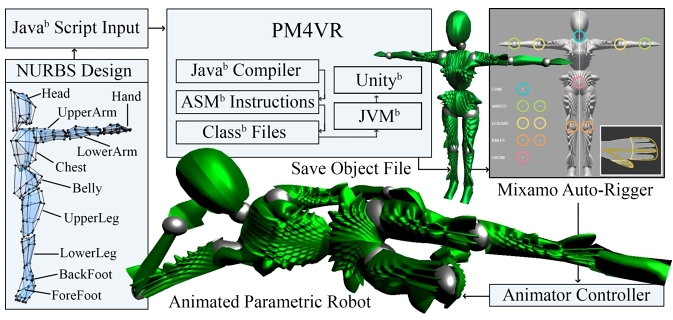
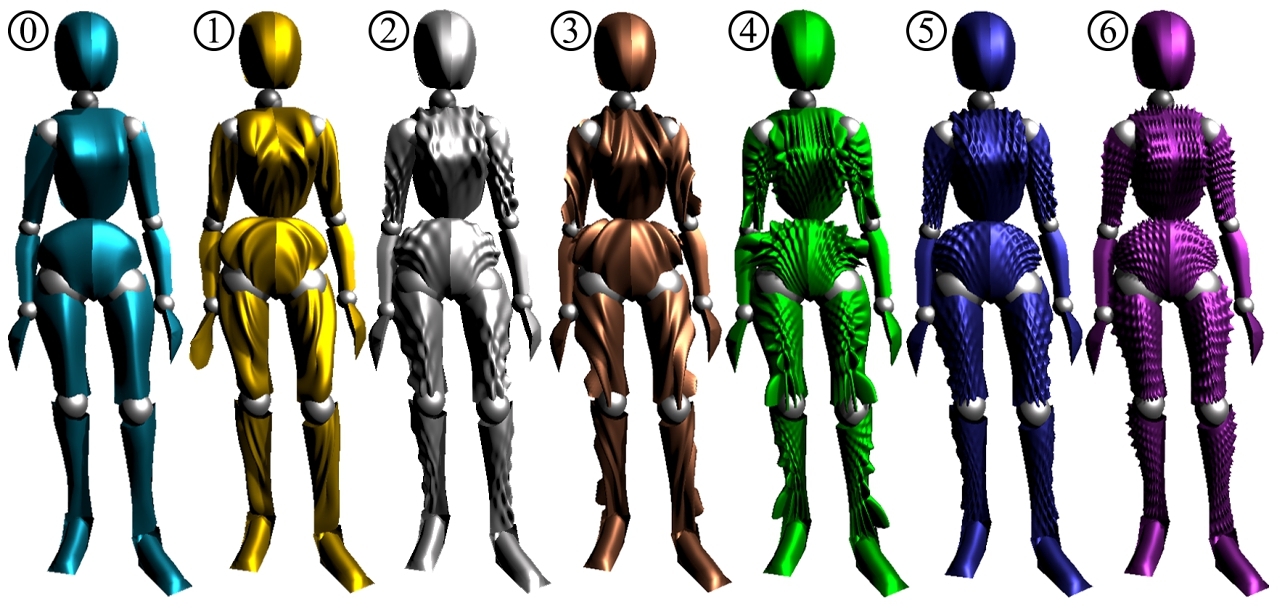
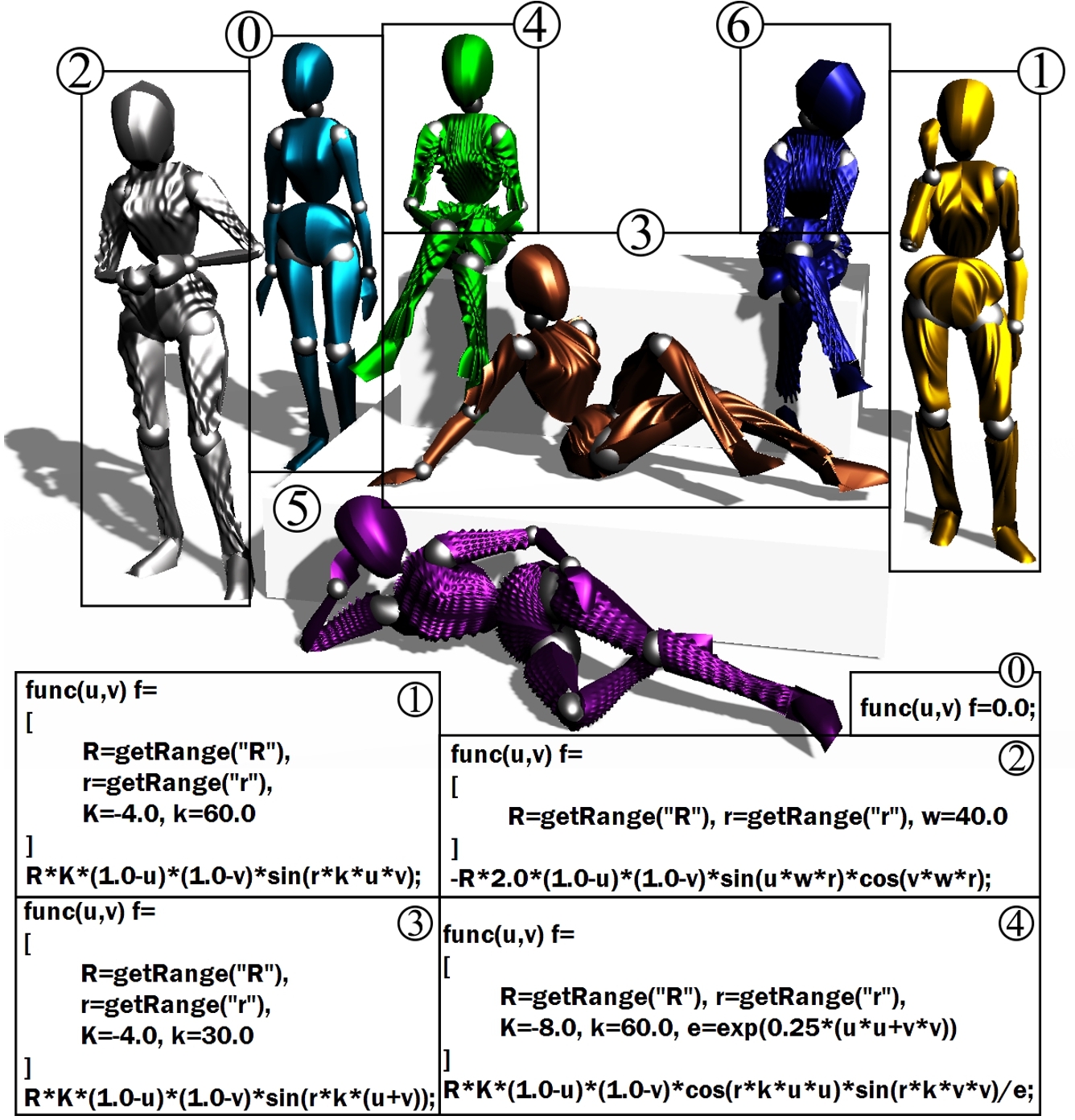
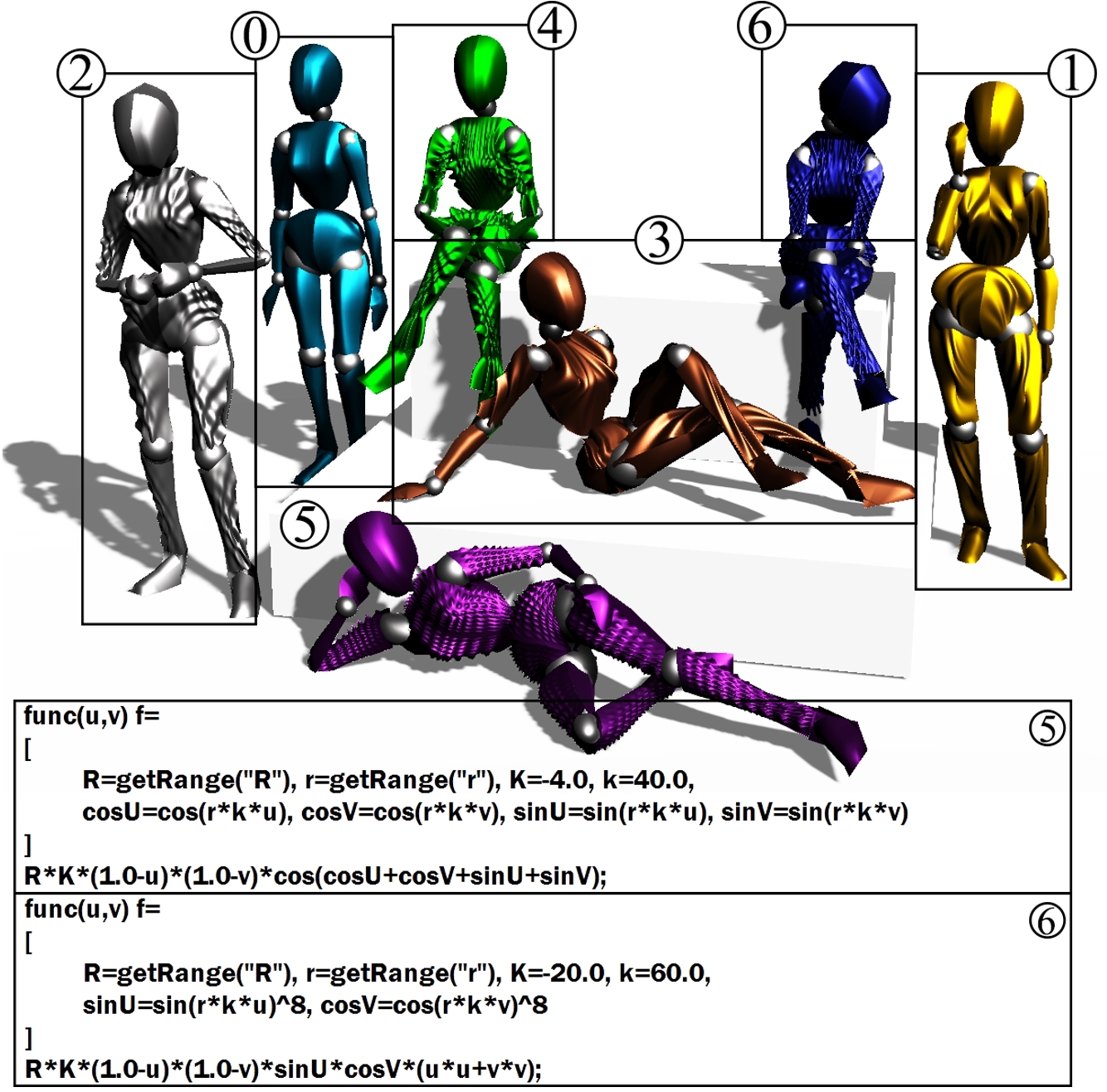
Various robotics design platforms, such as CoppeliaSim(V-REP) [2] and ROS-based robot architectures [18], provide simulation and visualization capabilities for robot design. However, these platforms tend to focus on behavior and control systems rather than the geometric modeling required for early design stages. Parametric modeling [22] has been widely used in design industries, allowing designers to create models defined by a set of adjustable parameters. Tools like Rhino/Grasshopper [3] and Autodesk's Fusion 360 [21] provide users with flexible parameter-based design workflows. However, these tools are often specialized for architectural or industrial design rather than robotic systems. PM4VR was initially developed to address the gap between parametric modeling and immersive VR environments [7]. By offering a scriptable VR system, PM4VR's extensions enable users to manipulate complex models within VR for various types of applications [8, 9, 10, 11, 12, 13, 14, 15, 16, 17]. As shown in Fig. 1, PM4Robot extends PM4VR for robotic applications, enabling the prototyping of robot geometry design in a creative way.
2 Technical Approach
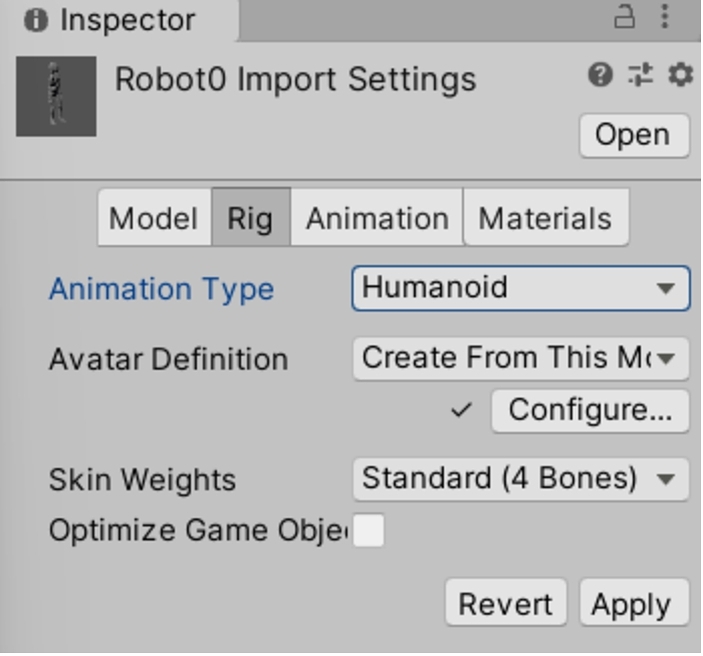
Overview.Fig. 2 provides an overview of our proposed PM4Robot-based solution for parametric conceptual robot design. Starting with the NURBS shapes for different parts of the robot's geometry, designed using the Unity NURBS editor originally developed by Li et al.[9], the robot designer creates a Java♭ script as input. After executing on PM4VR which is extended into Robot4VR, this Java♭ script automatically loads the NURBS shapes and their symmetric counterparts for all robot parts using a for loop. Robot4VR then stores the model in *.obj format, utilizing a custom texture mapping technique we developed to preserve material color. Next, the object file is uploaded to Adobe Mixamo's auto-rigger tool [1] and downloaded in *.fbx format, containing the bone information necessary for the animation creation. After adding bones using Mixamo's auto-rigger tool, the *.obj file is automatically converted to an *.fbx format. The robot is then animated in Unity using the Animator Controller, with the settings shown in Fig. 6. Finally, the robot can be animated in an immersive virtual environment using Unity's Animator Controller [6] tool.
Symmetric NURBS Surface.As the robot's geometry is symmetric given a center line, therefore, in Robot4VR, we extend the PM4VR by implementing a new Java♭ method called addNURBSSymmetry("name", q, f(u, v), u0 : u1, v0 : v1). Mathematically, we construct the surface by loading the NURBS geometry from "name".NURBS file as s(u, v); Then, deforming NURBS surface along normal direction at (u, v) with distance of parametric function f(u, v), where we get a new parametric surface g(u, v). And then, after flipping along axis q, we get gq(u, v) which is calculated with this equation:
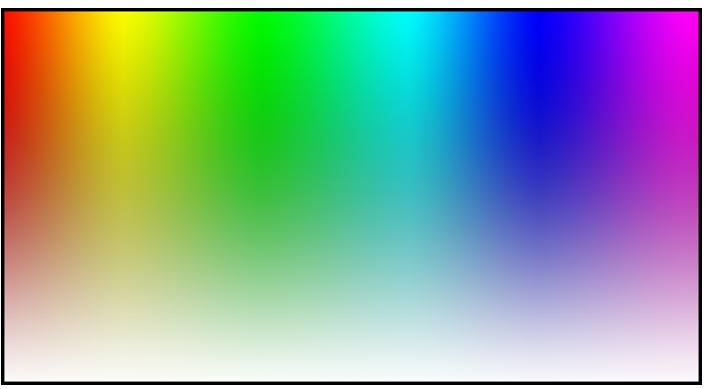
3 Experiment Results
To highlight the unique capabilities of PM4Robot, we conducted a series of case studies aimed at illustrating its rapid prototyping potential, emphasizing creativity and flexibility in robotic form development. PM4Robot was designed as an interactive interface that empowers users to conceptualize and animate robotic forms swiftly, adjusting various parameters to explore a broad range of design possibilities. As shown in Fig. 3, seven distinct conceptual robots were created using the PM4Robot interface, each exhibiting a unique shape while all being animated with the same gesture. This uniformity in animation allows a clear focus on the variations in robotic design, underscoring PM4Robot's versatility in handling diverse shapes and configurations. In addition, Figs. 4 and 5 demonstrate the adaptability of PM4Robot by presenting the same set of robot designs animated with different gestures. Each figure includes the Java♭ script parametric functions at the bottom, giving insight into the modularity and customization potential of the PM4Robot framework. These parametric functions allow for quick adjustments, enabling a seamless exploration of animation and design variations, which is crucial in PM4Robot's iterative design workflows.
User Study. Fig. 8 provides a glimpse into a preliminary user study conducted within a virtual robot showcase, where participants had the opportunity to engage directly with PM4Robot's interface by adjusting parameter values on a conceptual robot through the VR hardware of Oculus Quest 2. This hands-on engagement allowed users to explore PM4Robot's flexibility, gaining a deeper understanding of how parameter adjustments impact the final design and behavior of the robot. Such interactive user studies aim to gather feedback on usability and functionality, contributing to the ongoing refinement of PM4Robot and offering a comprehensive demonstration of these case studies in action, This preliminary user study showcases the dynamic prototyping process, highlighting PM4Robot's extensive design flexibility. For a more detailed understanding of PM4Robot's user interaction under the VR settings, please refer to this link: https://youtu.be/fbHEywZAlcw
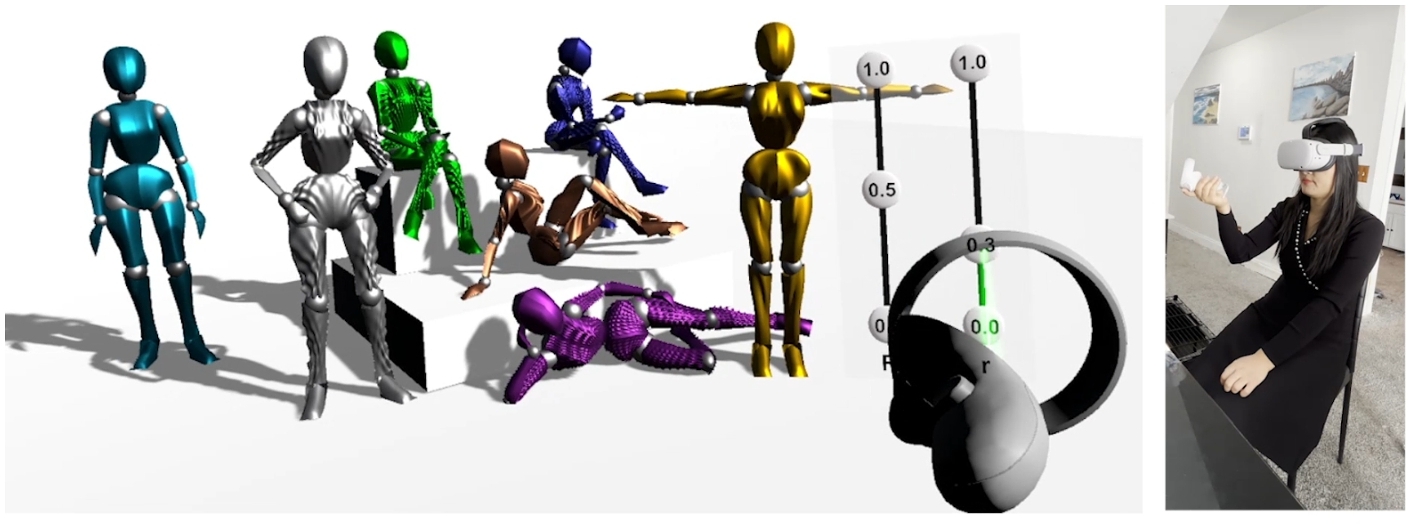
4 Conclusion
This paper presents PM4Robot, a parametric modeling interface specifically designed for conceptual robot design. Built on the PM4VR, PM4Robot introduces specialized tools tailored to the unique challenges of robotic form design. PM4Robot introduces a new way to approach conceptual robot design, combining parametric modeling and VR for an interactive, flexible design process. By merging parametric modeling with VR, PM4Robot offers an interactive, flexible platform for designing robotic appearance. A case study demonstrates the effectiveness and efficiency of PM4Robot in designing a variety of conceptual robots. The results indicate that PM4Robot enhances the creativity of conceptual robot designers, offering a promising avenue for future research in the field of parametric modeling for conceptual robot design. Future improvements for PM4Robot aim to incorporate real-time physics simulations and task-based simulations. Adding real-time physics will allow users to see how robots interact with their environment in a realistic way. Task-based simulations will further enhance PM4Robot by enabling users to simulate specific tasks, such as grasping objects, navigating obstacles, or performing complex maneuvers, which will be valuable for refining robot functionality for real-world applications.
References
- Dursun Akaslan and Mustafa Ulukavak. 2022. Using Photogrammetry for Modelling Realistic Characters in Virtual Reality. In THE PROCEEDINGS OF THE 4TH INTERNATIONAL CONFERENCE ON VIRTUAL REALITY, Vol. 15. 103.
- Sudip Chakraborty and PS Aithal. 2021. Forward kinematics demonstration of 6df robot using coppeliasim and c. International Journal of Applied Engineering and Management Letters (IJAEML) 5, 1 (2021), 29–37.
- Domenica Costantino, Arianna Grimaldi, and Massimiliano Pepe. 2022. 3D MODELLING OF BULDINGS AND URBAN AREAS USING GRASSHOPPER AND RHINOCERSOS.Geographia technica 17, 1 (2022).
- Lee Garber. 2013. Robot OS: A new day for robot design. Computer 46, 12 (2013), 16–20.
- Wei He, Zhijun Li, and CL Philip Chen. 2017. A survey of human-centered intelligent robots: issues and challenges. IEEE/CAA Journal of Automatica Sinica 4, 4 (2017), 602–609.
- Yoon Jeong-Shick. 2023. Unity: A Powerful Tool for 3D Computer Animation Production. Journal of the Korea Computer Graphics Society 29, 3 (2023), 45–57.
- Wanwan Li. 2022. PM4VR: A Scriptable Parametric Modeling Interface for Conceptual Architecture Design in VR. In Proceedings of the 18th ACM SIGGRAPH International Conference on Virtual-Reality Continuum and its Applications in Industry. 1–8.
- Wanwan Li. 2024. PM4Bag: A Scriptable Parametric Modeling Interface for Conceptual Bag Design Using PM4VR. In 2024 8th International Conference on Imaging, Signal Processing and Communications (ICISPC). IEEE, 178–181.
- Wanwan Li. 2024. PM4Car: A Scriptable Parametric Modeling Interface for Concept Car Design Using PM4VR.. In 2024 International Conference on Computer Graphics and Image Processing (CGIP). 1–6.
- Wanwan Li. 2024. PM4Fashion: A Scriptable Parametric Modeling Interface for Conceptual Fashion Design Using PM4VR. In 2024 International Conference on Advances in Computer Vision, Image and Virtualization (CVIV). 1–5.
- Wanwan Li. 2024. PM4Flower: A Scriptable Parametric Modeling Interface for Procedural Flower Generation Using PM4VR. In Proceedings of the 2024 13th International Conference on Software and Information Engineering. 1–5.
- Wanwan Li. 2024. PM4Music: A Scriptable Parametric Modeling Interface for Music Visualizer Design Using PM4VR. In 2024 International Conference on Digital Signal Processing (ICDSP). 1–5.
- Wanwan Li. 2024. PM4Pottery: A Scriptable Parametric Modeling Interface for Conceptual Pottery Design Using PM4VR. In 2024 International Conference on Automation, Robotics, and Applications (ICARA). 1–5.
- Wanwan Li. 2024. PM4Tree: A Scriptable Parametric Modeling Interface for Decorative Tree Design Using PM4VR. In 2024 11th International Conference on Soft Computing & Machine Intelligence (ISCMI). IEEE, 1–5.
- Wanwan Li. 2024. PM4Urban: A Scriptable Parametric Modeling Interface for Conceptual Urban Layout Design Using PM4VR. In 2024 13th International Conference on Computer Technologies and Development (TechDev). IEEE, 1–5.
- Wanwan Li. 2024. PM4WallArt: A Scriptable Parametric Modeling Interface for Conceptual Wall Art Design Using PM4VR. In 2024 International Conference on Computer and Communication Systems (ICCCS). 1–4.
- Wanwan Li. 2024. PM4WireArt: A Scriptable Parametric Modeling Interface for Conceptual Wire Art Design Using PM4VR. In 2024 International Conference on International Conference on Information and Computer Technologies (ICICT). 1–6.
- Ivano Malavolta, Grace Lewis, Bradley Schmerl, Patricia Lago, and David Garlan. 2020. How do you architect your robots? State of the practice and guidelines for ROS-based systems. In Proceedings of the ACM/IEEE 42nd International Conference on Software Engineering: Software Engineering in Practice. 31–40.
- Pedro Neto, J Norberto Pires, and A Paulo Moreira. 2010. CAD-based off-line robot programming. In 2010 IEEE conference on robotics, automation and mechatronics. IEEE, 516–521.
- Linda Onnasch and Clara Laudine Hildebrandt. 2021. Impact of anthropomorphic robot design on trust and attention in industrial human-robot interaction. ACM Transactions on Human-Robot Interaction (THRI) 11, 1 (2021), 1–24.
- PP Song, YM Qi, and DC Cai. 2018. Research and application of autodesk fusion360 in industrial design. In IOP conference series: materials science and engineering, Vol. 359. IOP Publishing, 012037.
- Milena Stavric and Ognen Marina. 2011. Parametric modeling for advanced architecture. International journal of applied mathematics and informatics 5, 1 (2011), 9–16.
- Sai H Vemprala, Rogerio Bonatti, Arthur Bucker, and Ashish Kapoor. 2024. Chatgpt for robotics: Design principles and model abilities. IEEE Access (2024).
- Allan Zhao, Jie Xu, Mina Konaković-Luković, Josephine Hughes, Andrew Spielberg, Daniela Rus, and Wojciech Matusik. 2020. Robogrammar: graph grammar for terrain-optimized robot design. ACM Transactions on Graphics (TOG) 39, 6 (2020), 1–16.

This work is licensed under a Creative Commons Attribution 4.0 International License.
ICIT 2024, Kuala Lumpur, Malaysia
© 2024 Copyright held by the owner/author(s).
ACM ISBN 979-8-4007-1737-6/24/12.
DOI: https://doi.org/10.1145/3718391.3718435